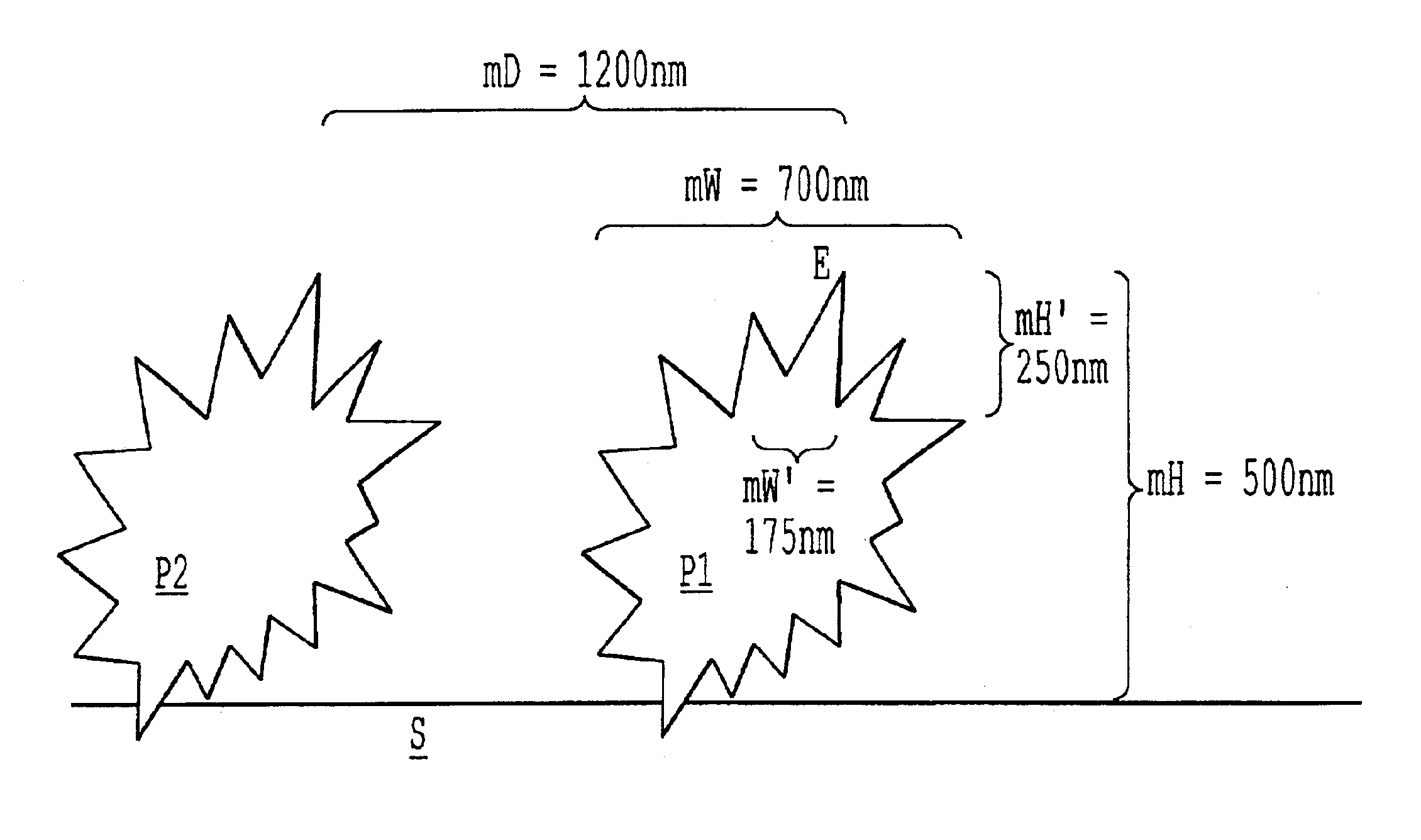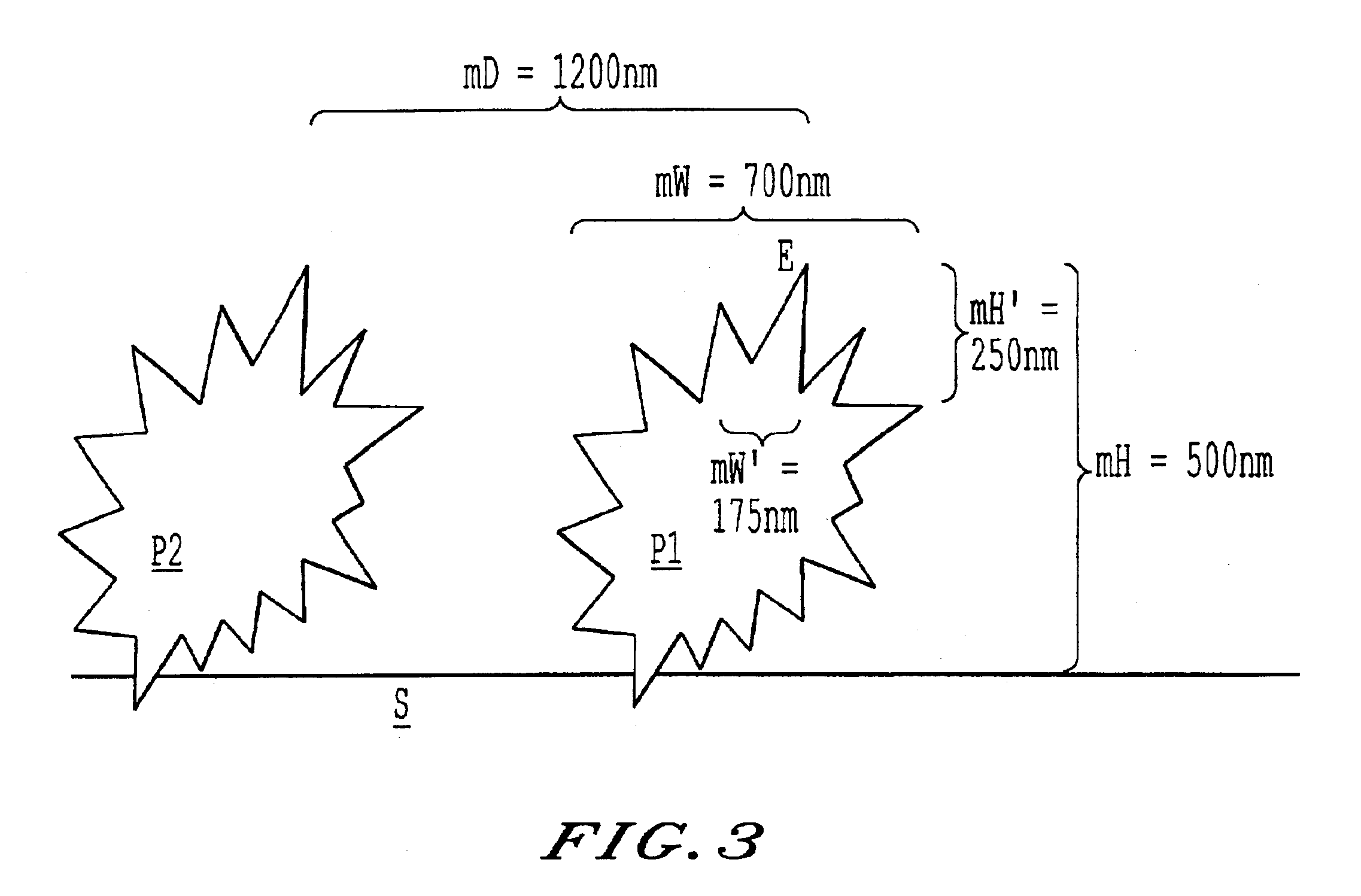Surfaces rendered self-cleaning by hydrophobic structures, and process for their production
a technology of hydrophobic structure and surface, applied in the field of self-cleaning surfaces, can solve the problems of poor wetting, lack of stability of self-cleaning surfaces, time-consuming and expensive cleaning of surfaces, etc., and achieve the effect of simple process and particularly effective self-cleaning
- Summary
- Abstract
- Description
- Claims
- Application Information
AI Technical Summary
Benefits of technology
Problems solved by technology
Method used
Image
Examples
example 1
20% by weight of methyl methacrylate, 20% by weight of pentaerythritol tetraacrylate, and 60% by weight of hexanediol dimethacrylate were mixed together. Based on this mixture, 14% by weight of Plex 4092 F, an acrylic copolymer from Röhm GmbH and 2% by weight of Darokur 1173 UV curing agent were added, and the mixture stirred for at least 60 min. This mixture was applied as carrier at a thickness of 50 μm to a PMMA sheet of thickness 2 mm. The layer was dried partially, for 5 min. The particles then applied by means of an electrostatic spray gun were hydrophobicized Aerosil VPR 411 fumed silica (Degussa AG). After 3 min, the carrier was cured at a wavelength of 308 nm under nitrogen. Once the carrier had been cured, excess Aerosil VPR 411 was brushed off. The surface was first characterized visually and recorded as +++, meaning that there is almost complete formation of water droplets. The roll-off angle was 2.4°. The advance angle and receding angle were each measured and found to ...
example 2
The experiment of Example 1 was repeated, particles made from aluminum oxide C (Degussa AG), an aluminum oxide with a BET surface area of 100 m2 / g, being applied by electrostatic spraying. Once the carrier had been cured, as in Example 1, and excess particles had been brushed off, the cured, brushed-off sheet was dipped into a formulation of tridecafluorooctyltriethoxysilane in ethanol (Dynasilan 8262, Sivento GmbH), for hydrophobicization. Once excess Dynasilan 8262 had dripped off, the sheet was annealed at a temperature of 80° C. The surface was classified as ++, i.e. water droplet development is not ideal, and the roll-off angle is below 20°. FIG. 1 shows an SEM of aluminum oxide C.
example 3
Sipernat FK 350 silica from Degussa AG is sprinkled onto the sheet from Example 1, treated with the carrier. After 5 min of penetration time, the treated sheet is cured under nitrogen in UV light at 308 nm. Once again, excess particles are brushed off, and the sheet is then in turn dipped in Dynasilan 8262, and then annealed at 80° C. The surface is classified as +++. FIG. 2 shows an SEM of the surface of particles of Sipernat FK 350 silica on a carrier.
PUM
| Property | Measurement | Unit |
|---|---|---|
| size | aaaaa | aaaaa |
| size | aaaaa | aaaaa |
| size | aaaaa | aaaaa |
Abstract
Description
Claims
Application Information
 Login to View More
Login to View More - R&D
- Intellectual Property
- Life Sciences
- Materials
- Tech Scout
- Unparalleled Data Quality
- Higher Quality Content
- 60% Fewer Hallucinations
Browse by: Latest US Patents, China's latest patents, Technical Efficacy Thesaurus, Application Domain, Technology Topic, Popular Technical Reports.
© 2025 PatSnap. All rights reserved.Legal|Privacy policy|Modern Slavery Act Transparency Statement|Sitemap|About US| Contact US: help@patsnap.com



